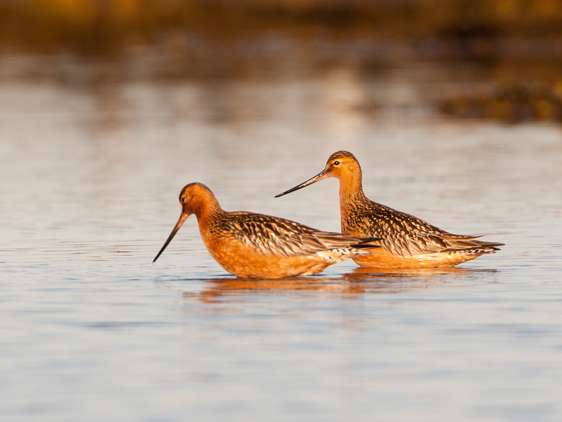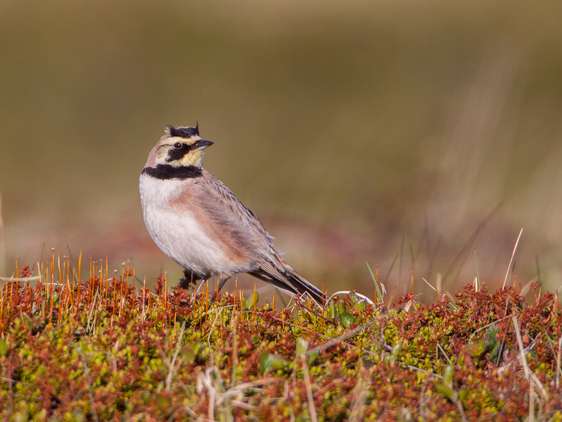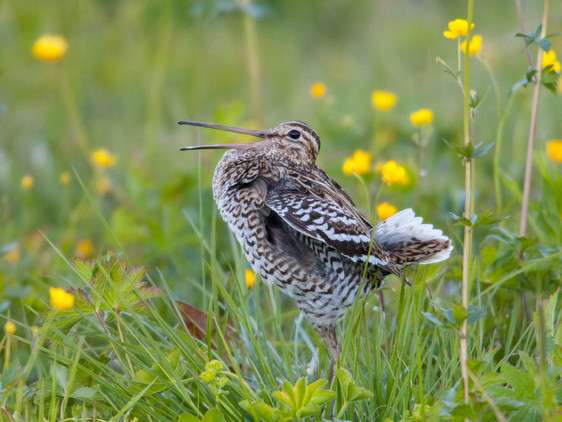Warmer climate threatening to northern birds

Will northern birds such as the Siberian jay and the red-flanked bluetail be gone in 50 years? There is a huge risk since a deteriorating climate for breeding is imminent. Another six species are also under threat and will require particular conservation actions in order to survive, according to Anouschka Hof, former researcher at Umeå University, who has developed a species analysis method.
"More than every ten bird species that breeds in the cool climate regions of northern Europe will be vulnerable if temperatures keep increasing. Two examples are the Siberian jay and the red-flanked bluetail," says Anouschka Hof, former researcher at the Department of Ecology and Environmental Science at Umeå University.
In collaboration with American researchers, the Umeå-based research team has studied 180 species that currently breed in subarctic and arctic regions by analysing and assessing their vulnerability to new climates as well as their lifespan. This has been conducted by studying how they live today; in what types of environments and in what climates. The information has then been applied to models of future climate.
"By carrying out this type of analysis, we have been able to predict what species are most at risk and why," she says.
Diversity in nature is under threat as global temperatures increase. Most researchers agree on this, but few studies show the extent of the effects. Most assessments only take into consideration how species are affected by changes in their local environment, without regard to species' sensitivity to global climate changes. The likelihood of species or populations dwindling or disappearing due to climate change is also affected by the general vulnerability of species and their capacity to survive under new conditions. The interplay between species and other biotic factors has also been overlooked but is receiving increased attention as of late.

The methods used by researchers have identified the species that are particularly in need of surveillance and preservation efforts to survive. For instance, it has been shown that the species already have limited geographic distribution, specific habitat requirements and a low reproduction rate. Furthermore, the methods show that six of the species studied – the great snipe, the rough-legged buzzard, the red-throated pipit, the common swift, the horned lark and the bar-tailed godwit – are already red-listed and will require conservation attention to survive in a warming climate.
"Such efforts may for instance be to alter or phase out current land-use," says Anouschka Hof.
The results of the analyses indicate the importance of looking beyond the direct exposure to climate change when taking on conservation activities. In assessing the future status of bird populations, conservational authorities must take into consideration both wintering grounds, suitable stopover sites for accumulation of energy for the journey, and breeding grounds. Even if a species has the opportunity to spread in general, it can succumb to the consequences of disappearing habitats.

"Long-distance migratory birds are the most sensitive ones. And if the climate warms up, breeding grounds will decrease to bird species that have adapted to breeding in the cooler climates in the north. The problem is particularly serious to the species with long brooding periods and with specific requirements regarding their breeding habitat," says Anouschka Hof.
The environment in the Arctic has extreme seasonal variations and the species that breed there have been adapted to a very short, but productive summer season. If the season shifts, the peak of production may have passed when birds breed, resulting in a deficiency in food to feed the young. Coastal species, such as for instance the Caspian tern, are also threatened by increased occasions of shore erosion and rising sea levels that drown natural breeding grounds. Increased near-shore sedimentation, caused by ongoing ice-melt, also has a negative effect on the Caspian tern's prey – resulting in food shortage. Yet another threat to the Nordic species is the competition from a number of more southern species that have spread in the North. Of those, predators are particularly threatening to bird species that breed on the ground, such as the Caspian tern.
More information: Anouschka R. Hof et al. Vulnerability of subarctic and arctic breeding birds, Ecological Applications (2016). DOI: 10.1002/eap.1434
Journal information: Ecological Applications
Provided by Umea University




















